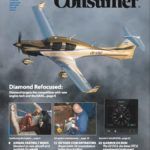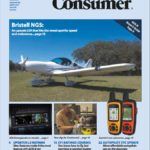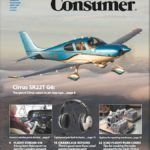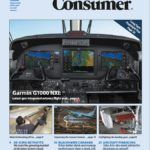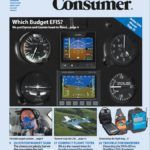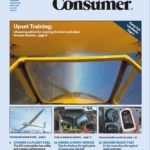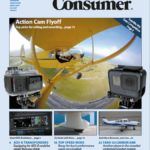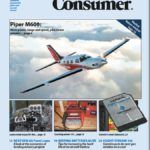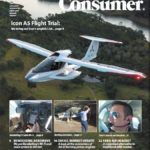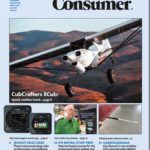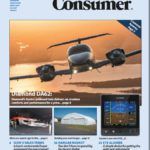Download the Full June 2017 Issue PDF
With some new flagship piston singles flirting with the $1 million mark, its logical that qualified buyers are eyeballing the entry-level turboprop single market. That could give Texas-based Evolution Aircraft (previously Lancair, before it was sold last summer) more opportunity to sell its Evolution Turboprop experimental airplane kits. If you think the average new Cirrus, Cessna TTx or Mooney owner doesnt have time to build an airplane, you may be right. But building an Evolution isn't like building a typical homebuilt in the garage.
Download the Full May 2017 Issue PDF
A colleague faced with an engine swap on his Baron recently asked me a tough one: Will a factory remanufactured engine-as opposed to a quality field overhaul done by a respected shop-greatly influence the resale value of the aircraft? Moreover, will the Baron be more difficult to sell without factory engines? The quotes he got showed almost a $10,000 delta, per engine, between a field overhaul using new cylinders and a Continental reman. Before hitting the pavement and asking several industry pros to weigh in, we threw the question out on sister publication AVweb.com to see what readers would do. The results were predictable.
Download the Full April 2017 Issue PDF
With nose bag in place and arms crossed at FL210 picking off the miles like nobodys business on a Cirrus demo, I got to thinking about the FAAs new BasicMed. Particularly, how pilots might be tempted to bend one of the rules to squeeze the most efficiency from a turbocharged airplane. The FAAs advisory circular AC 68-1, which describes how pilots can exercise their certificate privileges without holding at least a Third-Class medical certificate, limits flight above 18,000 feet MSL. Tempted to crack FL180 for another 6 knots in your turbocharged Mooney? According to the advisory circular, youd be operating outside of BasicMed privileges. There's even a bit on flight planning.
Download the Full March 2017 Issue PDF
High-performance single-engine turboprops seem to sort into three market segments: working airplanes, personal transport and for-hire people transportation. Cessnas Caravan locks down the cargo and working airplane side while the Pilatus PC-12 is a popular corporate and charter/cargo hauler. The TBM-the fastest of the herd by far-is a favorite among owners who fly themselves to distant destinations, usually without benefit of a professional pilot. Weve noticed that the airplane has a bit of a cult following and a community of owners who know each other. Pipers Meridian and now M600 compete in the owner-flown segment, but Daher believes the TBM exists in its own strata.
Download the Full February 2017 Issue PDF
Were awed at the precision with which the GFC700 flies-on all ends of the airframe spectrum. Its no easy task to make an autopilot fly just as we'll in a Skyhawk as it does in a beefy 350 King Air. The G1000 NXi retrofit includes complete removal of the old autopilot system and many trash bins of old wiring. Got an old King Air with the primitive AC inverter system? That all comes out, simplifying the electrical bus and overall reliability.
Download the Full January 2017 Issue PDF
Attitude information is displayed over a virtual blue sky and brown ground with a white horizon line, which is also part of the pitch scale. Pitch markings are spaced at 2.5-degree intervals and a yellow symbolic aircraft corresponds to the current pitch attitude. A slip/skid indicator is positioned at the bottom of the display, along with a magenta turn rate trend vector. Missing on the STCd G5, but standard on the version for experimental aircraft, is a flight director command bar presentation because autopilot input is excluded from the STC.
Download the Full December Issue PDF
Transitioning back to the powered configuration requires slowing below 76 knots. Turn the fuel on, open and lock the propeller dome, open the cowl flaps and move the propeller into the takeoff pitch position. Since the Rotax is carbureted, you'll need to turn on the choke when the engine is cold. Set the power to idle and turn the ignition to the start mode for a few seconds. An automatic electronic device adds the ignition with a three-second time delay, which allows the propeller blades to fully deploy before the engine starts. Once the engine starts, turn the ignition to both, advance the throttle to 2000 RPM and come off the choke as the engine warms. Landing can be done in powered or gliding configuration.
Download the Full November 2016 Issue PDF
These things don't last forever. The baking 200-degree temperatures on top of a glareshield mean you'll likely be faced with a repair or replacement. Generally, the main part that fails (ultimately leaking) is the rear rubber expansion/contraction diaphragm. Since the fluid in the compass needs room to expand and contract with temperature changes, a sealing membrane keeps the fluid inside. These simple devices arent packed with components. Typically, it takes just four small screws to expose the diaphragm on the rear compass housing.
Download the Full September 2016 Issue PDF
Despite rumors, the new M600 wing is not recycled from the jet Piper was developing some years ago; it was designed specifically for the M600. It carries a radar pod incorporated into the leading edge, a lower drag configuration than slinging it under the wing. We were told that there was initial concern with adverse stall effects with a leading-edge mounted pod, but there proved to be none. We noted that the stall strips on the leading edge were symmetrical on each wing and when we did stalls, there was no sign of roll off at the break. The main gear is further aft than on the M500 and has a six inch wider track.
Download the Full August 2016 Issue PDF
The wings on the A5 can be folded for storage or trailering (on an Icon designed trailer). The process takes about 30 seconds per wing to fold or unfold. We watched a first-timer take a minute to unfold a wing and lock it into position. To fold, a latching handle in the wing root is unlatched, the wing is pulled outboard via a handle at the tip, then rotated 90 degrees, moved aft 90 degrees and attached to the horizontal stabilizer inboard of its removable tip. To unfold, the process is reversed. The attachment latch will only lock if the wing is lined up correctly. The ailerons and flaps connect automatically through cam-type pushrod connections.
Download the Full July Issue PDF
Exhausting is the first word that comes to mind (there are others we'll refrain from printing) when looking back at our ADS-B coverage this past editorial year. Eyeball the ADS-B buyers guide in the April 2016 issue of Aviation Consumer and you'll see why. Its a market busting at the seams with panel and portable solutions. A major player is L-3 Avionics. Since its introduction nearly two years ago, we felt that L-3s transponder-based Lynx NGT-9000 was an excellent all-in-one ADS-B In and Out solution, though we also felt that its high price limited it to higher-end aircraft. But after a few major price reductions (it now starts at $5395), an entry-level NGT-9000 is within reach of more buyers. Plus, it packs a lot of punch in a single box.
Download the Full June 2016 Issue PDF
In most states, assumption of the risk by the injured party is a defense to a lawsuit brought by that party against the manufacturer. It appears to us that even if a buyer spends the money to retain the right to pursue legal action against Icon, the buyer has handed a perfect defense to the company by admitting assumption of the risk.

